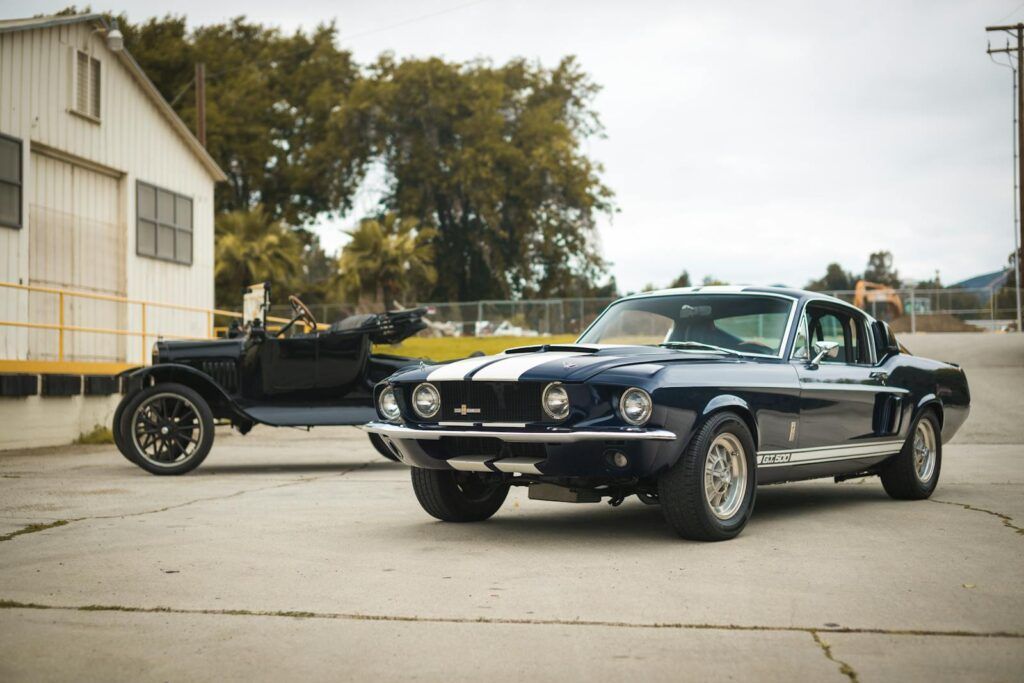
Alright, you petrolheads and purists, buckle up! We’re about to embark on a full-throttle journey through the hallowed halls of automotive history, a place where engineering brilliance meets breathtaking artistry, creating machines that aren’t just cars, but bona fide legends. Forget your fleeting fads and temporary trends; we’re talking about the true icons, the twelve vintage marvels that, decades later, still make our hearts thump and our jaws drop. These aren’t just vehicles; they’re rolling sculptures, mechanical masterpieces, and cultural touchstones.
From the jagged roar of a V-12 Ferrari slicing through hairpin turns to the sculpted wings of a Mercedes roadster opening like a sci-fi hatch, each of these automotive deities showcases timeless design married to unforgettable performance. They stir a potent blend of nostalgia and admiration, reminding us that true elegance transcends eras, a defiant roar in an age of fleeting digital distractions. So prepare for pop-culture Easter eggs, a few Bond nods, and enough trivia to make any history buff or boomer grin with instant recognition.
We’ve scoured the archives, fired up the imaginations, and selected a dozen undisputed champions – cars so cool they continue to define automotive perfection. Each one a testament to innovation, passion, and the sheer audacity of visionaries who dared to dream on four wheels. They are the benchmark, the standard, the very definition of cool. Let’s dive in and see what makes these magnificent machines truly immortal!

1. **Jaguar E-Type: The British Siren**Why does it prove timeless beauty? Enzo Ferrari reportedly called it the most beautiful car ever made when it debuted in 1961, according to RM Sotheby’s. That’s a quote from the master himself, folks, and if anyone knew beauty on wheels, it was Enzo. This isn’t just a car; it’s a statement, a rolling piece of art that redefined what automotive elegance could be. It landed like a bombshell, instantly captivating the world with its sheer, unadulterated beauty.
The Jaguar’s E-Type burst onto the scene at the 1961 Geneva Motor Show with curves so fluid even Michelangelo might have paused to admire them. And it wasn’t just a pretty face; under that stunning bonnet lurked a beast. Its 3.8-litre straight-six delivered a blistering 150 mph top speed and a sub-7-second 0–60 mph sprint—figures that were absolutely astonishing in the early sixties. This was a car that didn’t just look fast; it *was* fast, offering a blend of beauty and brute force that few could match.
Designed by the brilliant aerodynamicist Malcolm Sayer and based on race-winning D-Type technology, the E-Type was far ahead of its time. It featured disc brakes and independent rear suspension years before many of its rivals even dreamt of such sophistication. This was bleeding-edge engineering wrapped in a package that could stop traffic with a glance. It demonstrated British automotive heritage at its absolute peak, marrying sophisticated design with cutting-edge performance.
With over 72,000 units eventually built, the E-Type proved that you didn’t have to sacrifice usability for breathtaking beauty. It was a car that you could genuinely drive and enjoy, not just admire from afar in a museum. This blend of accessibility, performance, and drop-dead gorgeous looks solidified its place not just as a classic, but as an eternal icon, a symbol of everything that was right with the automotive world in the 1960s.
Car Model Information: 1974 Jaguar E-Type Series III Numbers Matching! 11k Original Miles! Concourse Quality!
Sp: uk
Name: Jaguar E-Type
Caption: 1961 E-Type Series 1 3.8-Litre, the first production model of this open two-seater
Aka: Jaguar XK-E (North America),Jaguar V-12
Manufacturer: Jaguar Cars
Production: 1961–1974
Class: Sports car
Predecessor: Jaguar XK150
Related: Jaguar D-Type,Jaguar XJ13
Successor: Jaguar XJS
Layout: FMR layout
Assembly: Coventry,England
Designer: Malcolm Sayer
Categories: 1970s cars, 2+2 coupés, All Wikipedia articles written in British English, All articles with dead external links, All articles with specifically marked weasel-worded phrases
Summary: The Jaguar E-Type, or the Jaguar XK-E for the North American market, is a British front mid-engined sports car that was manufactured by Jaguar Cars Ltd from 1961 to 1974. Its sleek appearance, advanced technologies, high performance, and competitive pricing established it as an icon. The E-Type’s claimed 150 miles per hour (240 km/h) top speed, sub-7-second 0 to 60 mph (97 km/h) acceleration, largely unitary body construction, front and rear independent suspension with disc brakes, mounted inboard at the rear, and rack-and-pinion steering spurred industry-wide changes.
The E-Type was based on Jaguar’s D-Type racing car, which had won the 24 Hours of Le Mans for three consecutive years beginning in 1955.
The E-Type employed what was, for the early 1960s, a novel design principle, with a front subframe carrying the engine, front suspension and front bodywork bolted directly to the body tub. No ladder frame chassis, as was common at the time, was needed and as such the first cars weighed only 1,315 kg (2,899 lb).
It is rumored that, on its debut on 15 March 1961, Enzo Ferrari called it “the most beautiful car ever made”, but this statement is not fully confirmed. In 2004, Sports Car International magazine placed the E-Type at number one on their list of Top Sports Cars of the 1960s. In March 2008, the Jaguar E-Type ranked first in The Daily Telegraph’s online list of the world’s “100 most beautiful cars” of all time.
Get more information about: Jaguar E-Type
Buying a high-performing used car >>>
Brand: Jaguar Model: E-Type
Price: $110,800 Mileage: 11,946 mi.
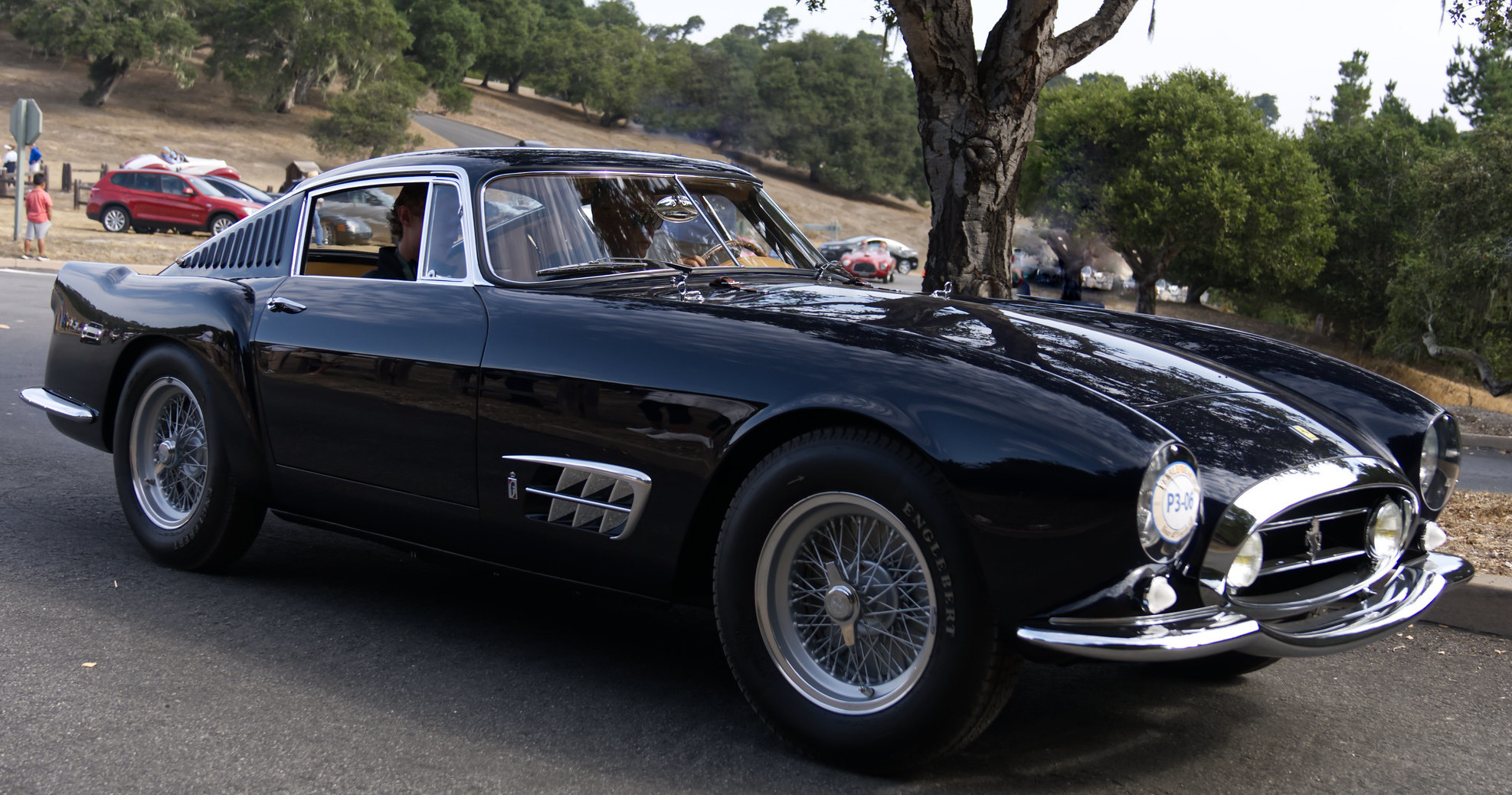
2. **Ferrari 250 GT Coupé: The Grand Tour Elegance**Why does it prove timeless beauty? Its Pininfarina coachwork and three-litre Colombo V-12 set the template for every Ferrari grand tourer that followed. If you wanted to understand where the heart of Ferrari’s road-going magic began, you’d find it beating fiercely within the chest of the 250 GT Coupé. It wasn’t just a car; it was the blueprint, the standard against which all future luxury-performance machines from Maranello would be judged. This was pure, unadulterated Italian vision.
Produced from 1954 to 1960, this magnificent machine packed a formidable 220 hp from its glorious Colombo V-12 engine, propelling it to a top speed of 149 mph in period tests. Its flowing aluminium body, sculpted by the legendary Pininfarina, seamlessly combined race-bred pedigree with a surprising degree of civilized comfort. We’re talking leather-trimmed seats and accommodating two-plus-two passengers, making it the perfect companion for long, spirited drives across the continent. This was a car that demanded to be driven, and it rewarded its owner with an experience unlike any other.
Only about 100 of the earliest coachbuilt examples exist, which makes them concours-prize rare, the kind of treasures that collectors dream of acquiring. To spot one slicing coastal highways today isn’t just seeing a car; it’s witnessing automotive poetry in motion, a living, breathing testament to an era when beauty and performance were forged with equal passion. The 250 GT Coupé is more than a vehicle; it’s a legacy, a masterpiece that defines grand touring.
Car Model Information: 2020 BMW X3 xDrive30i
Name: Ferrari 250 GT Coupé
Caption: Ferrari 250 GT Coupé Pinin Farina
Manufacturer: Ferrari
Aka: 250 GT
Production: 1954–1960
Class: Grand tourer
BodyStyle: coupé
Layout: Longitudinal engine,Front-engine, rear-wheel-drive layout#Front mid-engine, rear-wheel-drive layout
Engine: Ferrari Colombo engine,V12 engine
Transmission: Manual transmission
Wheelbase: 2600 mm
Abbr: on
Predecessor: Ferrari 250 Europa
Successor: Ferrari 250 GT 2+2,Ferrari 330 GTC
Categories: 1950s cars, Articles with short description, CS1 Italian-language sources (it), Cars introduced in 1954, Ferrari vehicles
Summary: The Ferrari 250 GT Coupé represented a series of road-going, grand touring cars produced by Ferrari between 1954 and 1960. Presented at the 1954 Paris Motor Show, the 250 Europa GT was the first in the GT-lineage. The design by Pinin Farina was seen as a more civilised version of their sporty Berlinetta 250 MM. Series built cars were an answer to the wealthy clientele demands of a sporty and luxurious Ferrari Gran Turismo, that is also easier to use daily.
Common among all the 250 GT cars was the 3.0-litre Colombo V12 engine and the fact that all were two-seaters. The predecessor to the series was the Lampredi-engined 250 Europa, built in very limited numbers.
The Europa GT was soon followed by the Pinin Farina-designed 250 GT Coupé. As the Carrozzeria Pinin Farina’s production capacities were being expanded at that time, the cars were initially bodied at the Carrozzeria Boano, then the Carrozzeria Ellena. After the body production was carried over to Pinin Farina, Ferrari could produce the Coupé in greater numbers than before. This series of models marked the production process transition from hand-crafted to semi-series production.
Even though great strides were taken to standardise the production, there was still a number of individual cars produced identified as Speciale. The successor, manufactured in even greater numbers was the four-seater, Ferrari 250 GT 2+2.
Get more information about: Ferrari 250 GT Coupé
Buying a high-performing used car >>>
Brand: Ferrari Model: 250 GT Coupé
Price: $26,485 Mileage: 40,004 mi.
Read more about: Collectible Classics: Unveiling the Multi-Million Dollar Machines That Define Automotive Heritage
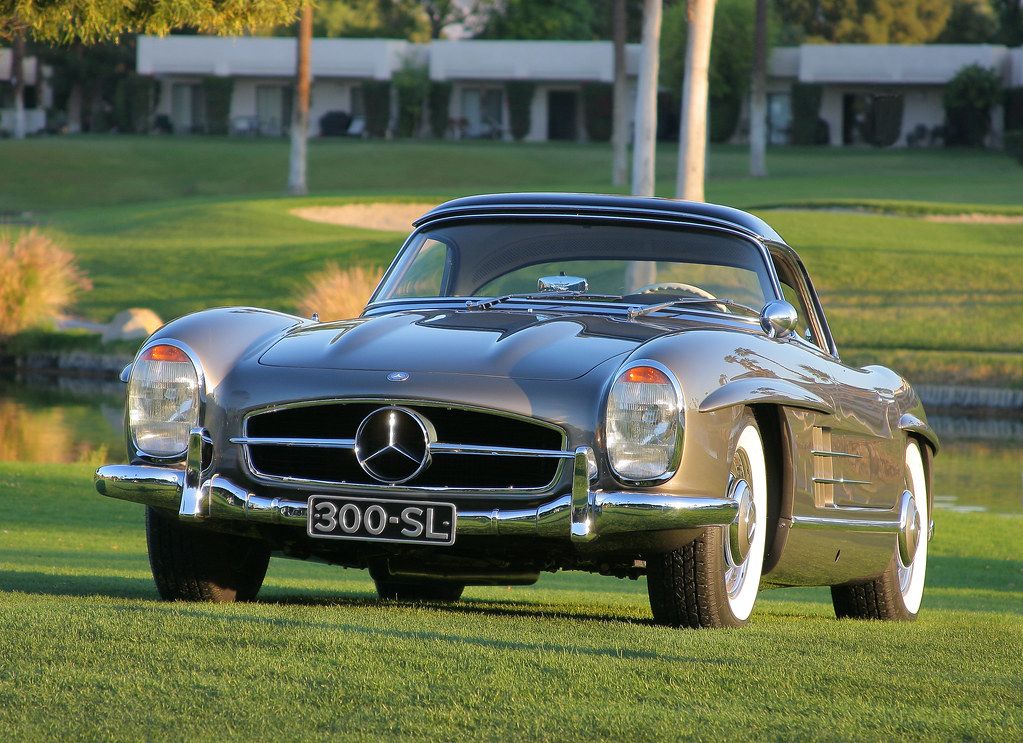
3. **Mercedes-Benz 300 SL Gullwing: The Winged Wonder**Why does it prove timeless beauty? It was the world’s fastest production car upon its 1954 debut, and its upward-swinging doors remain a design showstopper. This isn’t just a car; it’s an event, a mechanical marvel that looks like it flew straight out of a science fiction novel. The Gullwing is a legend not just for its speed, but for its sheer audacity in design, a true iconoclast in a world of automotive conformity.
The 300 SL borrowed its tubular space frame and pioneering fuel-injected 3.0-litre inline-six engine straight from the Silver Arrow race cars, a direct lineage to Mercedes’ racing dominance. This wasn’t some tame road car; it was a racer for the street, capable of achieving a record-shattering speed of 161 mph. To cope with the demands of its innovative chassis, engineers bravely raised the door sills to stiffen the structure, then, with a stroke of genius, invented the iconic gullwing doors. This meant owners wouldn’t need contortionist skills to enter, turning a necessity into a global design sensation.
It wasn’t long before Hollywood royalty and oil sheiks alike were clamouring to pose beside those flared fenders, transforming magazine covers into instant icons. The Gullwing wasn’t just a mode of transport; it was a status symbol, a declaration of taste and daring. It epitomised post-war optimism and a commitment to pushing boundaries, becoming a beacon of luxury and performance for the elite.
Nearly seven decades later, the Mercedes-Benz 300 SL Gullwing still commands jaw-dropping admiration at every car event it graces. Those doors, that stance, that sheer presence – it all combines into a spectacle that transcends time. It’s an enduring symbol of luxury, performance, and groundbreaking innovation, a winged wonder that continues to capture hearts and imaginations worldwide.
Car Model Information: 2020 BMW X3 xDrive30i
Name: Mercedes-Benz 300
Caption: Mercedes-Benz 300 (W186)
Manufacturer: Mercedes-Benz
Production: 1951–1957,12,190 built,W186 Saloon: 7,646 , W186 Cabriolet D: 642
Class: Full-size,luxury car
BodyStyle: Saloon (car)
Platform: Mercedes-Benz W186
Related: Mercedes-Benz W188,Mercedes-Benz 300 SL
Layout: FR layout
Engine: Mercedes-Benz M186 engine,SOHC,Straight-6 engine
Transmission: 4-speed manual , 3-speed automatic
Wheelbase: 3050 mm
Abbr: on
Length: 4950 mm
Width: 1840 mm
Predecessor: Mercedes-Benz 770
Successor: Mercedes-Benz W189
Doors: 4
Categories: Articles with short description, CS1: long volume value, CS1 German-language sources (de), CS1 interwiki-linked names, Commons category link from Wikidata
Summary: The Mercedes-Benz W186 Model 300 is a four-door luxury sedan produced by Mercedes-Benz between 1951 and 1957. It was the company’s flagship model at the time, succeeding the World War II era W150. Three versions were produced in succession, known informally as the 300a (or simply 300), 300b, and 300c. An enlarged “300d” variant built on the W189 chassis succeeded it in late 1957.
Also referred to as a “Type 300”, the W186 was equal in features and price but superior in performance to the rival Rolls-Royce Silver Cloud and Bentley S1. Favored by statesmen and business leaders, it offered options such as a glass partition, VHF mobile telephone, and dictation machine.
The W186 is often identified as an Adenauer after Konrad Adenauer, the first Chancellor of the Federal Republic of Germany (West Germany), who employed six custom cabriolet, hardtop saloon, and landaulet versions of the W186 and its successor W189 during his 1949-1963 tenure. Among the custom features in these “parade cars” were writing desks, sirens, curtains, dividing partitions, sunroofs, and half-roof “landaulet” configurations.
Technologically advanced, the 300 was regarded as a “driver’s” car, sharing numerous design innovations and mechanical components with the iconic Mercedes-Benz 300 SL “Gullwing”, including engine, suspension, and chassis.
Get more information about: Mercedes-Benz W186
Buying a high-performing used car >>>
Brand: Mercedes-Benz Model: 300 SL Gullwing
Price: $26,485 Mileage: 40,004 mi.

4. **Aston Martin DB5: The Spy Car Legend**Why does it prove timeless beauty? It defined British elegance on screen when James Bond drove it in Goldfinger with flawless cinematic flair. Ah, the DB5. It’s not just a car; it’s a character, an extension of the world’s most famous secret agent. This isn’t merely a mode of transport; it’s a cultural phenomenon, forever etched in our minds as the epitome of cool, sophisticated espionage. It’s an icon not just of automotive design, but of global popular culture.
Built from 1963 to 1965, the DB5’s 4.0-litre straight-six engine produced a healthy 282 bhp, sending it to a top speed of 145 mph. That was plenty for 007’s high-stakes errands, ensuring he arrived in style and, more often than not, escaped with panache. This car wasn’t just about raw power; it was about effortless grace, a gentleman’s express capable of extraordinary feats, always with an air of understated superiority.
Carrozzeria Touring Superleggera’s “Superleggera” body was a marvel of engineering, featuring hand-formed aluminium panels wrapped around a tubular frame. This offered both immense strength and feather-light agility, making the DB5 a joy to drive. Inside, the luxury was palpable: sumptuous leather seats beckoned, while rich wood trim gleamed under cabin lights, inspiring secret-agent daydreams in anyone lucky enough to sit behind the wheel.
Nearly 1,060 original units rolled off the Newport Pagnell line, a testament to its desirability even before its cinematic debut. But it was that screen presence that cemented the DB5’s status as the world’s most famous Bond gadget, transforming it from a beautiful grand tourer into an immortal legend. It’s a car that truly lives up to its legendary status, embodying British craftsmanship and timeless appeal.
Read more about: Unlocking Hollywood’s Vault: A Deep Dive into the Most Valuable Movie Memorabilia Ever Sold at Auction
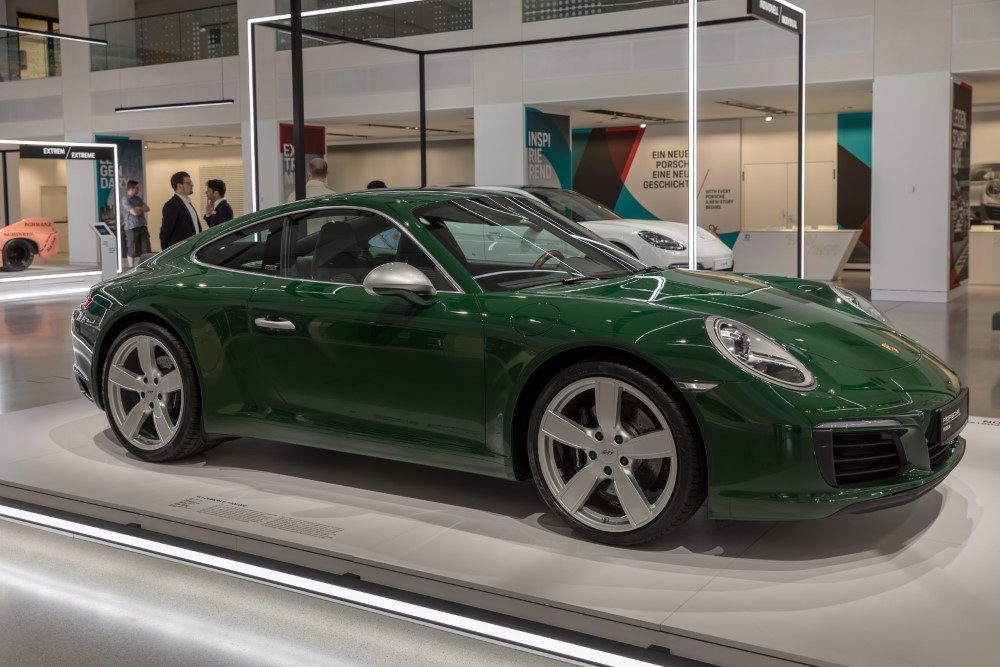
5. **Porsche 911: The Enduring Icon**Why does it prove timeless beauty? Its rear-engine layout and fastback silhouette have evolved over sixty years, yet remain instantly recognizable in any era. This isn’t just an icon; it’s a cornerstone, a constant in a world of automotive change. The 911 isn’t merely a car you drive; it’s a philosophy, a heritage, and a relentless pursuit of driving perfection, instantly identifiable whether you’re looking at a classic or a brand-new model.
Unveiled at the 1963 Frankfurt Motor Show as the 901 (before a gentle nudge from Peugeot led to its more famous moniker, the 911), its air-cooled flat-six engine kicked out 130 PS, propelling it to a top speed of 210 km/h. These were seriously impressive figures for a new sports car of its time. Ferry Porsche’s original design was so inherently brilliant that it laid the groundwork for over 1.2 million units built across eight glorious generations, an unparalleled feat in the sports car world.
The recipe for purity and performance has remained remarkably consistent: those distinctive round headlights, that unmistakable sloping roofline, and the practical yet sporty 2+2 seating configuration. These are the elements that define the 911, making it a masterpiece of evolutionary design rather than revolutionary whims. It’s a testament to the power of getting things fundamentally right from the very beginning, creating something truly enduring.
Today, even a modern 911 still feels like driving automotive history, yet it delivers light-speed response and a grin-inducing exhaust note that’s utterly contemporary. It’s a car that constantly reinvents itself while staying true to its soul, providing an immersive, visceral driving experience that few rivals can match. The Porsche 911 isn’t just an icon; it’s the very definition of one, constantly setting the benchmark for sports car excellence.
Car Model Information: 2021 Porsche 911
Name: Porsche 911
Caption: The 1 millionth 911 produced on display at Volkswagen Group Forum, Berlin
Designer: Ferdinand Alexander Porsche
Manufacturer: Porsche
Production: September 1964 – present
Assembly: Stuttgart,Baden-Württemberg
Class: Sports car
BodyStyle: unbulleted list
Related: unbulleted list
Layout: Rear-engine design,rear-wheel drive
Predecessor: Porsche 356
Categories: 1970s cars, 1980s cars, 1990s cars, 2+2 coupés, 2000s cars
Summary: The Porsche 911 model series (pronounced Nine Eleven or in German: Neunelf) is a family of German two-door, high performance rear-engine sports cars, introduced in September 1964 by Porsche AG of Stuttgart, Germany, and now in its eighth generation. All 911s have a rear-mounted flat-six engine, and usually 2+2 seating, except for special 2-seater variants. Originally, 911s had air-cooled engines, and torsion bar suspension, but the 911 has been continuously enhanced, and evolved across generations. Though the 911 core concept has remained largely unchanged, water-cooled engines were introduced with the 996 series in 1998, and front and rear suspension have been replaced by Porsche-specific MacPherson suspension up front, and independent multi-link rear suspension.
The 911 has been raced extensively by private and factory teams, in a variety of classes. It is among the most successful competition cars. In the mid-1970s, the naturally aspirated 911 Carrera RSR won world championship races including Targa Florio and the 24 Hours of Daytona. The 911-derived 935 turbo also won the 24 Hours of Le Mans in 1979. Porsche won the World Championship for Makes in 1976, 1977, 1978, and 1979 with 911-derived models.
In a 1999 poll to determine the Car of the Century, the 911 ranked fifth — one of two in the top five that had remained continuously in production (the original Beetle remained in production until 2003). The one millionth example was manufactured in May 2017 and is in the company’s permanent collection.
Get more information about: Porsche 911
Buying a high-performing used car >>>
Brand: Porsche Model: 911
Price: $126,995 Mileage: 8,629 mi.
Read more about: Rev Up for 2025: 12 Sports Cars That Will Electrify Your Driving Experience and Set the Roads Ablaze

6. **Maserati 3500 GT: The Italian Vision**Why does it prove timeless beauty? It was Maserati’s first true grand tourer built in series production, marrying race-bred straight-six power with unmistakable Pininfarina flair. This was Maserati planting its flag firmly in the luxury-performance segment, showcasing an Italian vision of grand touring that was both elegant and exhilarating. It wasn’t just a car; it was a statement of intent, a beautiful symphony of engineering and artistry.
Launched in 1957, the 3500 GT carried a robust 3.5-litre Tipo 101 inline-six engine, pushing out a respectable 220 PS across its svelte 2,646 lb chassis. Its “Superleggera” aluminium coachwork, once again from the masterful hands of Touring, wrapped slender curves around a strong steel tube frame, resulting in exotic looks and wonderfully light handling. This combination created a car that was as thrilling to behold as it was to drive, a true embodiment of Italian automotive passion.
Around 2,226 units rolled out by 1964, setting Maserati on a clear course toward becoming a purveyor of luxury-performance icons. To spot one at a concours today is more than just seeing a classic car; you’ll swear you’ve stepped onto an Italian film set from the sixties, complete with the evocative atmosphere and an undeniable sense of cinematic drama. The 3500 GT represents a pivotal moment for Maserati, blending motorsport pedigree with road-going elegance in a truly unforgettable package.
Alright, gearheads, if you thought the first half of our journey through automotive nirvana was thrilling, prepare yourselves, because we’re not done! The road ahead is paved with more legends, machines that didn’t just turn heads but fundamentally reshaped our understanding of speed, luxury, and sheer, unadulterated cool. These are the next six titans, each one a thunderous roar in the symphony of engines, etching their names into the very fabric of pop culture and engineering marvel. Fasten your seatbelts, because the enduring roar is just beginning!
Car Model Information: 2020 BMW X3 xDrive30i
Name: Maserati 3500 GT
Manufacturer: Maserati
Production: 1957–1964,2,226 produced
Assembly: Modena
Designer: Carrozzeria Touring
Class: Grand tourer
BodyStyle: 2+2 (car body style),coupé
Layout: Front-engine, rear-wheel-drive layout
Related: Maserati Sebring
Engine: Straight-six engine
Transmission: ZF Friedrichshafen AG
Wheelbase: 2600 mm
Abbr: on
Length: 4780 mm
Width: 1760 mm
Weight: 1440 kg
Predecessor: Maserati A6
Successor: Maserati Sebring,Maserati Mistral
Sp: uk
Categories: 1960s cars, Articles with short description, CS1 Italian-language sources (it), Cars introduced in 1957, Commons category link is on Wikidata
Summary: The Maserati 3500 GT (Tipo 101) and the Maserati 3500 GT Spyder (Tipo 101/C) are 2-door coupé and convertible grand tourers made by Italian car manufacturer Maserati between 1957 and 1964. It was a seminal vehicle for Maserati as the company’s first successful attempt at the Gran Turismo market and series production.
Get more information about: Maserati 3500 GT
Buying a high-performing used car >>>
Brand: Maserati Model: 3500 GT
Price: $26,485 Mileage: 40,004 mi.
7. **Chevrolet Corvette Sting Ray: The American Dream**Now, if you want a slice of pure, unadulterated 1960s American optimism and hot-rod culture, you simply cannot look past the Chevrolet Corvette Sting Ray. This wasn’t just a car; it was a defiant, exhilarating statement on wheels, bursting onto the scene with a swagger that captivated an entire nation. Its split-window roof and those unmistakable shark-nose lines captured an era, creating a striking package that looked ready to breach the sound barrier while standing still. This, friends, was Detroit’s audacious answer to the European thoroughbreds, and boy, did it answer with a thunderous roar.
The 1963 C2 Sting Ray was a design revelation, introducing features like hidden headlamps and a fastback roof so aerodynamic it seemed to defy gravity. But this beauty was far from skin-deep. Underneath that curvaceous, weight-saving fiberglass body lurked a small-block V8 engine, pushing it to mid-six-second 0–60 mph times. In its day, that was more than just respectable; it was a sledgehammer blow for Detroit’s first true sports car, proving America could build not just powerful, but also sophisticated, performance machines.
Whether you opted for the wind-in-your-hair convertible or the sleek coupe, the Sting Ray quickly transcended mere transportation. It became an undisputed symbol of freedom, cruising down Route 66 to the soundtrack of jukebox rock ’n’ roll. Even today, its legacy endures; collectors still descend upon swap meets, their eyes gleaming, hunting for those elusive fiberglass bits and dyno charts from the original small-block era. It’s a rolling testament to an age when cars were built with soul, and it continues to fuel the dreams of every petrolhead who yearns for that quintessential American driving experience.
This era, marked by the rise of American muscle cars, saw the Corvette Sting Ray carve its own formidable niche. Alongside titans like the Ford Mustang and Dodge Charger, it solidified a new philosophy in automotive design, one that dared to blend raw power and speed with genuinely innovative styling. The Sting Ray didn’t just follow trends; it set them, defining what an American sports car could and should be, echoing through generations of performance vehicles.
Car Model Information: 2020 BMW X3 xDrive30i
Name: Chevrolet Corvette (C2)
Caption: 1963 Chevrolet Corvette Sport Coupe
Manufacturer: Chevrolet
Aka: Chevrolet Corvette Sting Ray
Production: August 1962–July 1967
ModelYears: 1963–1967
Platform: Series 0800 (1962-1964),Series 194 (1965-1967)
Chassis: Body-on-frame
Assembly: St. Louis, Missouri
Predecessor: Chevrolet Corvette (C1)
Successor: Chevrolet Corvette (C3)
Class: Sports car
BodyStyle: Convertible (car),coupé
Layout: Front-engine, rear-wheel-drive layout
Engine: {{cvt,327,cuin,L,1,Chevrolet small-block engine (first- and second-generation)#327,V8 engine
Wheelbase: cvt
Length: cvt
Width: cvt
Height: cvt
Weight: cvt
Transmission: manual transmission,manual transmission,Powerglide
Related: Bill Thomas Cheetah
Designer: Larry Shinoda
Categories: 1960s cars, All articles needing additional references, All articles with specifically marked weasel-worded phrases, All articles with unsourced statements, Articles needing additional references from July 2024
Summary: The Chevrolet Corvette (C2) is the second-generation Corvette sports car, produced by the Chevrolet division of General Motors (GM) for the 1963 through 1967 model years.
Get more information about: Chevrolet Corvette (C2)
Buying a high-performing used car >>>
Brand: Chevrolet Model: Corvette Sting Ray
Price: $26,485 Mileage: 40,004 mi.
Read more about: America’s Iconic Sports Car: Decoding the Most Problematic Corvette Models in History to Help You Buy Smart
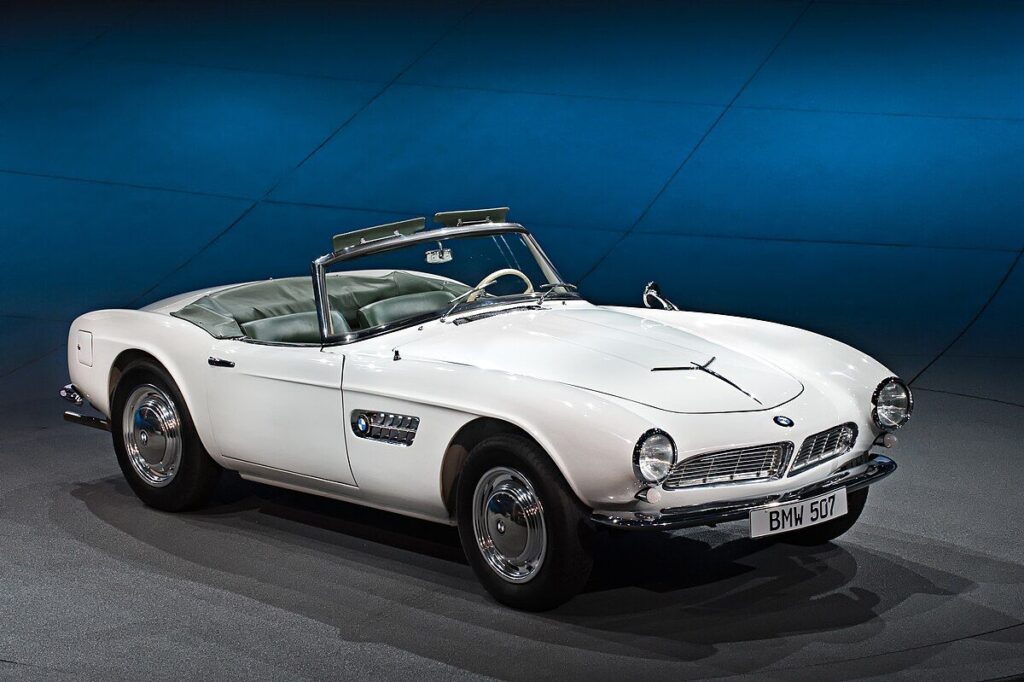
8. **BMW 507: Teutonic Elegance**Prepare yourselves for a vision of sheer, unadulterated automotive poetry, albeit one shrouded in an almost mythical rarity. With just 252 units ever built from 1956 to 1959, the BMW 507 isn’t just a car; it’s a whisper of automotive legend, BMW’s rarest production roadster and unequivocally one of the most valuable machines ever made. This is Teutonic elegance personified, a car that, despite its initial commercial struggles, has ascended to an almost untouchable pedestal of desirability, proving that true beauty often carries a hefty price tag, both then and now.
The genesis of this magnificent beast lay in the vision of Albrecht von Goertz, who sculpted that impossibly sleek aluminium body over a shortened BMW 503 chassis. The result was a lightweight marvel, tipping the scales at just 2,932 lb. Power came from a glorious 3.2-litre V8, blooming a respectable 150 PS – enough to propel this German masterpiece to 122 mph in a brisk 11.1 seconds flat. It was conceived by Max Hoffman, the legendary American importer, who urged BMW to build an American-style cruiser. However, its lofty price tag of $10,500 proved far too steep for a market expecting something closer to $5,000, ultimately sealing its fate as a commercial rarity, but a design triumph.
Yet, for some, price was no object. Take, for instance, the King of Rock and Roll himself, Elvis Presley, who famously owned not one, but two of these automotive gems. One can only imagine the iconic image of Elvis, clad in full denim glory, serenading his car stereo while cruising in a 507 – a scene of pure, unadulterated cool. Today, finding one of these extraordinary roadsters is like discovering a forgotten treasure, with a single BMW 507 easily fetching well into seven figures at auction, a testament to its enduring allure and historical significance.
While BMW’s later icons like the 911 (oops, *Porsche* 911, my apologies, a slip of the tongue!) would truly define German precision and performance on a mass scale, the 507 represents a different, almost forgotten, aspiration within BMW’s heritage. It showcased an early commitment to luxury and sophisticated design, a bold move into the high-end sports car market that, despite its limited production, left an indelible mark. The 507 is more than just a car; it’s a poignant chapter in BMW’s storied history, a symbol of daring ambition and breathtaking, timeless design.

9. **Lamborghini Miura: The Supercar Pioneer**Alright, prepare for a moment of genuine automotive revolution, because here we have the beast that started it all: the Lamborghini Miura. Forget everything you thought you knew about exotic cars, because when the Miura debuted, it didn’t just break the mould; it utterly annihilated it, setting fire to the rulebook and rewriting the very definition of a supercar. It was, quite simply, the world’s first mid-engine production supercar, igniting a design revolution that continues to echo through the halls of every high-performance car manufacturer today.
Unveiled with a bang at the Geneva Motor Show in 1966, the Miura was an absolute shockwave. Its transverse 3.9-litre V12 engine wasn’t just powerful, belting out a ferocious 350 PS; it was positioned *behind* the seats, not in front. This radical layout, coupled with a Bertone body so low it barely cleared a cigarette packet, allowed Marcello Gandini to sculpt a machine unlike anything seen before. The Miura wasn’t just fast, hitting 170 mph; it shattered notions of supercar layout, making the mid-engine configuration the undisputed blueprint for future exotics. It was a masterpiece, a visual and mechanical symphony.
Given its groundbreaking nature, the Miura’s rarity only adds to its legendary status. According to Lamborghini, only around 750 examples were ever produced across its P400, P400 S, and SV variants, making it a considerably rarer sight than most museum pieces. Every detail, from its iconic slatted rear deck to those mesmerising, eyelash-framed headlights, remains an ultimate Lamborghini calling card, instantly recognizable and utterly breathtaking. It’s a testament to Ferruccio Lamborghini’s audacious vision, a man who famously decided to build better cars than Ferrari, and with the Miura, he unequivocally did.
The Miura stands as the undeniable zenith of the “Italian Automotive Renaissance,” a period where beauty merged with advanced engineering to create automotive art. It didn’t just offer unmatched speed and striking aesthetics; it epitomized Italian flair and engineering prowess, creating a new standard against which all future supercars would be judged. The Miura wasn’t merely a car; it was a cultural phenomenon, a roaring, passionate declaration that changed the automotive landscape forever, proving that sometimes, the engine really does belong behind you.
Read more about: Revving Through History: The 14 Unforgettable Machines That Defined the Roaring Sixties Automotive Era
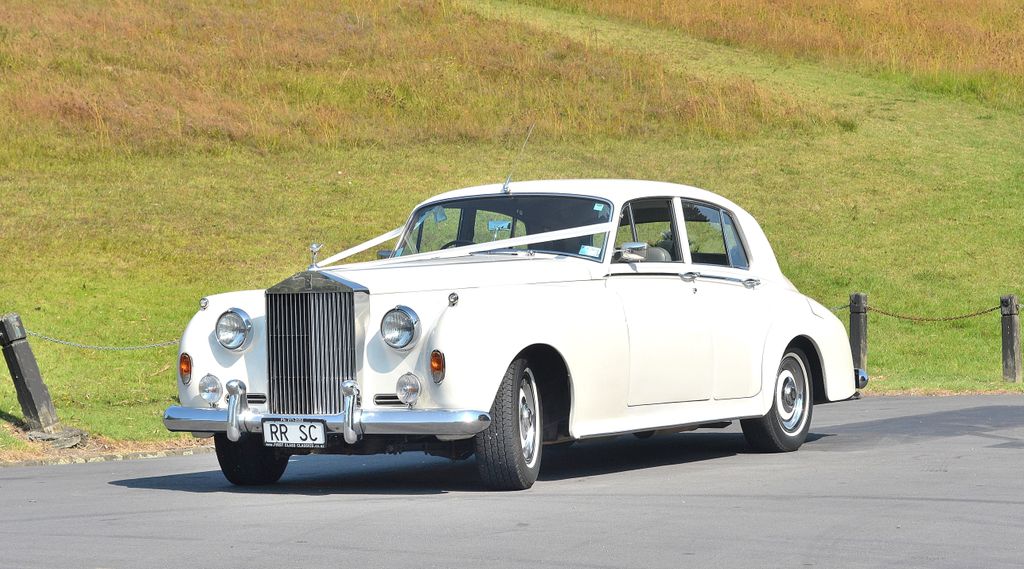
10. **Rolls-Royce Silver Cloud II: The Ultimate Gentleman Cruiser**Now, let’s shift gears from raw, untamed speed to an altogether different, yet equally compelling, form of automotive perfection: sheer, unadulterated luxury and regal presence. Enter the Rolls-Royce Silver Cloud II, a machine that isn’t just a car; it’s a mobile palace, a rolling statement of impeccable taste and aristocratic grace. Its magnificent 6.2-litre V8 engine didn’t chase horsepower records, but instead boosted torque and delivered an unparalleled level of quiet luxury, all while retaining the Silver Cloud’s utterly noble and commanding presence. This was, and still is, the ultimate gentleman cruiser.
Built between 1959 and 1962, the Silver Cloud II was a grand statement, carrying a robust 380-cu-in V8 engine under a body penned by the masterful John Blatchley. Measuring a stately 5,410 mm in length and weighing a substantial 2,108 kg, this was luxury at a wonderfully dignified pace, capable of a serene top speed of 114 mph. For the first time, power steering became standard, ensuring that piloting this magnificent beast was as effortless as it was elegant. And for those with even grander aspirations, bespoke drophead coupes were crafted by revered coachbuilders like Mulliner, turning these cars into unique works of art for the jet-set aristocrats of the era.
Stepping inside a Silver Cloud II wasn’t merely entering a car; it was akin to stepping into a luxurious, exquisitely appointed drawing-room. Riding on semi-elliptic leaf springs and enveloped by thick, luxurious wool carpet, the experience felt less like an automobile corridor and more like a private Rolls-Royce lounge on wheels. Every surface, every detail, exuded an air of handcrafted excellence and serene comfort. Today, collectors deeply prize this blend of old-world craftsmanship, combined with ample, effortless torque, making it the perfect companion for leisurely, yet utterly commanding, motorway cruises.
The Silver Cloud II perfectly encapsulates “European Elegance,” representing the pinnacle of British automotive heritage where sophistication and performance were meticulously balanced with unparalleled luxury. It wasn’t about breaking speed records, but about setting standards for comfort, quietness, and an undeniable sense of occasion. This car stands as a timeless testament to a bygone era of motoring, where the journey was as important as the destination, and every mile was an exercise in supreme refinement.
Car Model Information: 2020 BMW X3 xDrive30i
Name: Rolls-Royce Silver Cloud
Manufacturer: Rolls-Royce Limited
Designer: John Polwhele Blatchley
Production: 1955–1966,7,372 produced
Predecessor: Rolls-Royce Silver Dawn
Successor: Rolls-Royce Silver Shadow
Engine: 4.9 L
Abbr: on
Transmission: Automatic transmission
Weight: 4647 lb
Assembly: Crewe,England
Layout: FR layout
Sp: uk
Categories: 1960s cars, All Wikipedia articles written in British English, All articles with unsourced statements, Articles with short description, Articles with trivia sections from February 2024
Summary: The Rolls-Royce Silver Cloud is a luxury automobile produced by Rolls-Royce Limited from April 1955 to March 1966. It was the core model of the Rolls-Royce range during that period. The Silver Cloud replaced the Silver Dawn and was, in turn, replaced by the Silver Shadow. The John P. Blatchley design was a major change from the pre-war models and the highly derivative Silver Dawn. As part of a range rationalisation, the Bentley S1 was made essentially identical, apart from its radiator grille and badging.
Get more information about: Rolls-Royce Silver Cloud
Buying a high-performing used car >>>
Brand: Rolls-Royce Model: Silver Cloud II
Price: $26,485 Mileage: 40,004 mi.

11. **Ford GT40: The Le Mans Conqueror**Right, now if you want a story of grit, revenge, and unyielding American determination, strap yourselves in for the Ford GT40. This is the machine that didn’t just win races; it ignited a transatlantic rivalry and delivered one of the most iconic motorsport upsets in history. Its monstrous 7.0-litre V8 mid-engine layout wasn’t just a clever bit of engineering; it was a thunderous declaration that silenced Ferrari’s dynasty at Le Mans, securing four straight victories starting in that legendary year of 1966. This car wasn’t built for comfort; it was built to conquer, and conquer it did.
Born from Henry Ford II’s fiery vow to beat Enzo Ferrari after a failed merger attempt, the GT40 was a pure-bred racing weapon. It notoriously stuffed a colossal 427 cu in V8 behind the driver, a powerplant capable of propelling this American brute to a staggering 200 mph down the infamous Mulsanne Straight. To own one of these titans today is to possess a piece of racing immortality, as only just 105 road-legal Mk IIs ever rolled out of the factory, making them rarer than a primo, perfectly-aged Le Mans truffle – utterly priceless and fiercely sought after.
And let’s talk about that name: GT40. It simply referred to its mere 40-inch height, a dimension that gave it those unmistakable, jet-fighter proportions. Imagine legendary director Steven Spielberg’s grainy footage, a low, menacing silhouette of the GT40 chasing down Porsches as dawn broke over the Sarthe circuit. The sheer visual impact was as powerful as its performance. That unforgettable 1-2-3 finish at the 1966 race wasn’t just a win; it was a defiant statement, proving beyond any doubt that brute Ford horsepower, married with British chassis nimbleness, could absolutely rewrite racing history, leaving an indelible mark that resonates even today.
This is a classic example of “American Muscle” taken to the international stage, demonstrating that the pursuit of perfection wasn’t just for the domestic drag strips. The GT40 stands as a titan among “Cult Classics,” a machine forged in the crucible of intense competition that ultimately reshaped global motorsport. It’s a testament to the fact that with enough ambition, engineering prowess, and a healthy dose of rivalry, you can achieve the seemingly impossible, turning a challenge into an eternal legacy on four wheels.
Car Model Information: 1966 Ford GT40
Name: Ford GT40
Caption: Ford GT40 Mk.I in JWA Gulf Oil racing colors
Manufacturer: Ford Advanced Vehicles,John Wyer,Kar Kraft,Holman-Moody,Shelby American
Production: 1964–1969
Assembly: Slough,Los Angeles
Designer: Ron Bradshaw
Class: Group 4 (racing),Group 5 (racing),Group 6 (racing)
BodyStyle: coupé
Layout: MR layout
Engine: Cubic inch,289 CID (4737 cc) V-8,302 CID (4942 cc) V-8,427 CID (6997 cc) V-8
Transmission: Manual transmission
Wheelbase: 95 in
Abbr: on
Length: 160 in
Width: 70 in
Height: 40.5 in
Weight: convert
Successor: Ford P68
Sp: uk
Categories: 24 Hours of Le Mans race cars, All Wikipedia articles needing clarification, All Wikipedia articles written in British English, All articles needing additional references, All articles that may contain original research
Summary: The Ford GT40 is a high-performance mid-engined racing car originally designed and built for and by the Ford Motor Company to compete in 1960s European endurance racing and the World Sportscar Championship. Its specific impetus was to beat Scuderia Ferrari, which had won the prestigious 24 Hours of Le Mans race for six years running from 1960 to 1965. As rules of the time required that GT cars were built in dozens and sold, around 100 cars in total have been made, mostly as 289 cu in (4.7 L) V8-powered Mk Is, of which at least 50 were made in 1965, which allowed FIA-homologation as Group-4-Sportscar for 1966 until 1971. This gave the old MK.I car of Gulf-Wyer the chance to enter and win Le Mans in 1968 and 1969 after prototypes had been limited to 3 litre, with the performance of the Ford 7-litre-V8 in the factory 1966 Mk.II and 1967 Mk.IV prototypes causing this rule change, which also banned the 4-litre V12 Ferrari 330P4 and others after 1967. The Mk.III designation was used for some road-legal cars.
The Ford GT40 debuted in 1964, and improvements in 1965 led to Ford winning World Championships categories from 1966 to 1968. The first Le Mans win came in 1966 with three 427 cu in (7.0 L) powered Mk.II prototypes crossing the finish line together, the second in 1967 with the same engine now in quite different US-built Mk.IV prototype chassis similar to the “J-car” mule. In order to lower ever-higher race top speeds, a rule change from 1968 onwards limited prototypes to 3.0 litre Formula 1 engines; the sportscar “loophole”, however, allowed the private JW “Gulf Oil” team to win at Le Mans in 1968 and 1969 running a Mk.I with a 5.0 litre engine.
The GT40 effort began in Britain in the early 1960s when Ford Advanced Vehicles began to build the Mk I, based upon the British Lola Mk6, in Slough, UK. After disappointing race results, the engineering team was moved in 1964 to Dearborn, Michigan, US, to design and build cars by its advanced developer, Kar Kraft. All chassis versions were powered by a series of American-built Ford V8 OHV engines modified for racing.
In the 1966 Le Mans, the GT40 Mk II car broke Ferrari’s winning streak, making Ford the first American manufacturer to win a major European race since Jimmy Murphy’s Duesenberg in the 1921 French Grand Prix. In the 1967 Le Mans, the GT40 Mk IV car became the only car developed and assembled entirely (both chassis and engine) in the United States to achieve the overall win at Le Mans.
Get more information about: Ford GT40
Buying a high-performing used car >>>
Brand: Ford Model: GT40
Price: $110,000 Mileage: 13,350 mi.
Read more about: Beyond the Chrome: A MotorTrend Deep Dive into Vintage Cars That Command Millions Today

12. **Ford Thunderbird: The Original Personal Luxury**And finally, we arrive at a car that carved out an entirely new niche, a vehicle that wasn’t trying to be the fastest or the most luxurious, but instead offered something uniquely American: personal luxury. The Ford Thunderbird, launching in 1955, didn’t just join a segment; it invented one, blending sporty flair with an upscale appointment list that simply didn’t exist in quite the same way before. This was a car for those who wanted style, comfort, and a touch of individuality, all wrapped up in a sleek, effortlessly cool package. It redefined what a car could be for the discerning individual.
Initially introduced as a two-seat convertible, powered by a respectable 4.8-litre V8, the original T-Bird carefully positioned itself. It wasn’t explicitly marketed as a pure sports car, a direct competitor to the Corvette, but rather as a ‘personal cruiser.’ And what a cruiser it was! Complete with sumptuous leather seats, convenient electric windows, and a beautifully designed removable hardtop, it offered an irresistible blend of sportiness and creature comforts. The market responded with overwhelming enthusiasm, leading the T-Bird to famously outsell the Corvette five to one in its early years, proving Americans truly craved comfort married with a sporty dash.
As the years rolled on, the Thunderbird evolved, never losing its distinctive identity. In 1958, it gracefully added a rear seat and those instantly recognizable tailfins, expanding its role and becoming, in many ways, the ‘cool parent’ of luxury coupes. Decades later, its signature porthole window on the hardtop and that iconic snorkel hood remain enduring design cues, not just for the Thunderbird itself, but for the entire personal luxury car segment it pioneered. It truly left an indelible mark on automotive aesthetics and market trends.
What the Thunderbird achieved was nothing short of brilliant: it created a new category of desirability, demonstrating how American manufacturers could successfully blend comfort, style, and a hint of sportiness for a burgeoning market. It showed that perfection isn’t always about raw numbers or track times; sometimes, it’s about perfectly understanding and fulfilling a specific desire – the desire for a car that makes every drive feel special, an affirmation of individual style and relaxed elegance. The Ford Thunderbird is a masterclass in carving out a legacy, proving that sometimes, being a trendsetter is the coolest thing of all.
Car Model Information: 1966 Ford Thunderbird Base
Name: Ford Thunderbird
Caption: 1957 Thunderbird
Manufacturer: Ford Motor Company
Production: unbulleted list
ModelYears: unbulleted list
Class: unbulleted list
Layout: Front-engine, rear-wheel drive layout
Categories: 1960s cars, 1970s cars, 1980s cars, 1990s cars, 2000s cars
Summary: The Ford Thunderbird is a personal luxury car manufactured and marketed by Ford Motor Company for model years 1955 to 2005, with a hiatus from 1998 to 2001.
Ultimately gaining a broadly used colloquial nickname, the T-Bird, the model was introduced as a two-seat convertible, subsequently offered variously in a host of body styles including as a four-seat hardtop coupe, four-seat convertible, five-seat convertible and hardtop, four-door pillared hardtop sedan, six-passenger hardtop coupe, and five-passenger pillared coupe, before returning in its final generation, again as a two-seat convertible.
At its inception, Ford targeted the two-seat Thunderbird as an upscale model. The 1958 model year design introduced a rear seat and arguably marked the expansion of a market segment that came to be known as personal luxury cars, positioned to emphasize comfort and convenience over handling and high-speed performance.
Get more information about: Ford Thunderbird
Buying a high-performing used car >>>
Brand: Ford Model: Thunderbird
Price: $44,999 Mileage: 71,017 mi.
Read more about: 12 Iconic Boomer Cars Millennials Can’t Stand: The Generational Divide on Wheels
And there you have it, folks! Twelve magnificent machines, a dozen automotive deities that have not only roared through history but continue to whisper, hum, and shout their legacies across the decades. From the track-conquering might of the GT40 to the sheer opulence of the Silver Cloud II, each of these icons tells a vibrant story of innovation, design, and an unwavering passion for the automobile. They remind us that true greatness, whether forged in a race shop or a luxury atelier, transcends time, remaining as captivating and relevant today as the day they first burst onto the scene. So next time you see a classic roll by, give it a nod. You’re not just seeing a car; you’re witnessing a piece of history, a true icon, still defining automotive perfection, one magnificent mile at a time.



